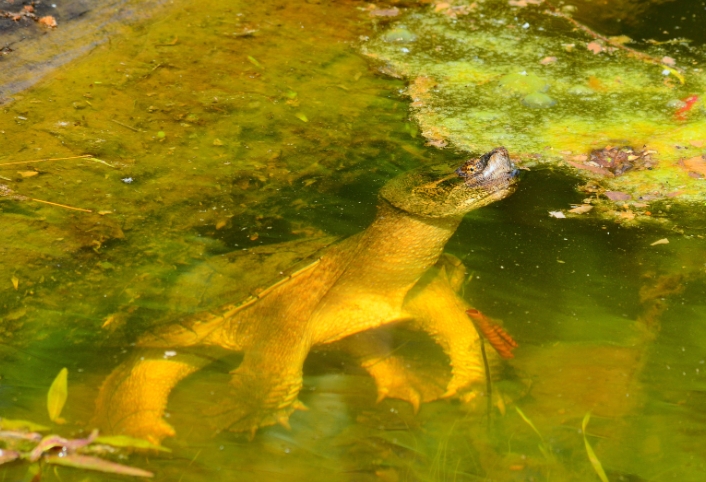How to Keep Snapping Turtles Out of Your Pond
Ponds are a beautiful addition to any landscape, offering both aesthetic and ecological benefits. However, snapping turtles can pose a threat to the balance and safety of your pond environment. In this guide, we will walk you through why it’s important to keep snapping turtles at bay, how to identify them, and how to keep snapping turtles out of your pond effectively.

Why Should You Keep Snapping Turtles Out of Your Pond?
Snapping turtles may seem harmless at first glance, but they can cause significant issues in your pond. Firstly, they are aggressive and can harm other aquatic life. Their predatory nature makes them a threat to fish, frogs, and even smaller birds. This can disrupt the ecological balance of your pond.
Moreover, snapping turtles pose a risk to humans and pets who may come in contact with them. They have a strong bite that can injure anyone who gets too close.
Lastly, snapping turtles can damage vegetation and landscape around the pond. They can uproot plants and damage the pond liner, leading to costly repairs. Keeping them out is essential for preserving the beauty and integrity of your pond.
How Can You Identify Snapping Turtles in Your Pond?
Identifying snapping turtles can be the first step in managing their presence. Snapping turtles have distinct physical characteristics that make them easier to identify. They have large, rugged shells that can measure up to 18 inches in length. Their shells are typically dark brown with a serrated edge near the tail.
Additionally, snapping turtles have long necks and powerful jaws. Their tails are almost as long as their shells and are often covered with ridged scales.
Behaviorally, snapping turtles tend to lurk at the bottom of the pond and may rarely surface. They are more active during the night, making them somewhat elusive during the day. Knowing these behaviors can also help in identifying them easier.
What Are the Best Methods to Prevent Snapping Turtles from Entering Your Pond?
Preventing snapping turtles from entering your pond involves a combination of methodologies:
How Can You Use Physical Barriers to Keep Turtles Out?
One of the most effective ways to keep turtles out of your pond is by using physical barriers. A well-constructed fence can serve as a strong deterrent. Choose a fine-mesh fencing material and bury it at least six inches deep to prevent the turtles from digging beneath it. The fence should also be around three feet high to keep adult snapping turtles from climbing over it.
Another option is to cover your pond with a net. The mesh size should be small enough to prevent turtles from crawling through but large enough not to interfere with the pond’s aesthetics. The net must be secure and tight to ensure there are no gaps where turtles can enter.
You can also use natural barriers like rocks and logs around the perimeter of your pond. This provides an additional level of difficulty for turtles trying to reach the water.
What Environmental Changes Can Deter Snapping Turtles?
Modifying the environment around your pond can also make it less attractive to snapping turtles. One effective strategy is to reduce vegetation both in and around the pond. Dense flora provides an ideal habitat for snapping turtles, so keeping the area clear makes your pond less appealing.
Additionally, adding natural predators can help. Large fish species are particularly effective. They can prey on snapping turtle hatchlings, thus controlling the population.
Another strategy is to lower the water level in your pond. Snapping turtles prefer deeper waters for easy movement and hiding. Reducing the depth makes the pond less suitable for them.
How Can You Reduce Attractants in Your Pond?
Reducing attractants is another practical way to prevent snapping turtles. For starters, make sure to remove any food sources like fish food or pet food from around the pond. These items can attract turtles looking for an easy meal.
Maintaining clean water is crucial. Regularly clean out debris and algae that snapping turtles might find appealing.
Also, consider adjusting the pond environment to discourage turtle habitation. Use a water filter to keep the water clean and clear, making it less inviting for turtles.
Finally, maintaining a proper pond depth and avoiding shallow banks can also make your pond less attractive to turtles. They prefer environments that offer both easy access to water and places to hide.
How to Safely Remove Snapping Turtles from Your Pond?
If you find snapping turtles in your pond despite all preventive measures, safe removal is essential.
First, you need to wear protective gloves to avoid injury from their strong bite. You can use a turtle trap designed specifically for snapping turtles, which often involves bait like fish or meat to lure them in.
After successfully trapping the turtle, it’s crucial to release it in an appropriate habitat far from your pond. Ensure the new location has adequate water sources and is safe for the turtle.
Another option is to contact a wildlife expert. These professionals have the experience and equipment necessary to handle snapping turtles safely and humanely.
Conclusion
Maintaining a healthy, balanced pond free of snapping turtles can be a challenging task. The answer to “How to keep snapping turtles out of pond?” is simple. With proper identification, prevention, and safe removal strategies, you can effectively keep snapping turtles out of your pond. From physical barriers and environmental changes to reducing attractants, these methods can help you protect your pond and its inhabitants.
FAQ
Should you remove snapping turtles from a pond?
Yes, removing snapping turtles is often necessary to protect the pond’s ecosystem, other aquatic life, and ensure safety for humans and pets.
Do snapping turtles harm ponds?
Yes, snapping turtles can harm ponds by preying on other aquatic life, damaging vegetation, and potentially harming humans and pets with their strong bite.
